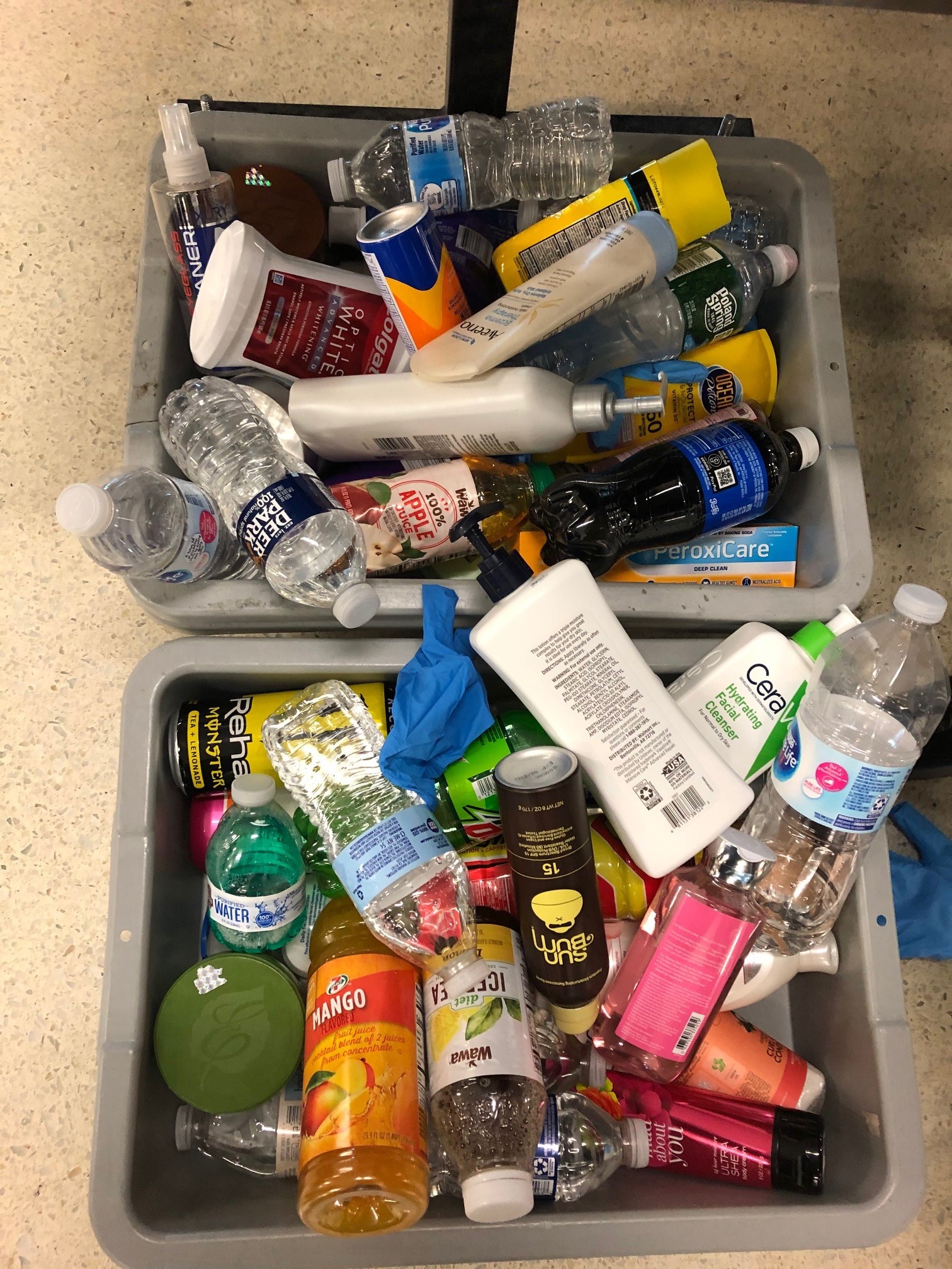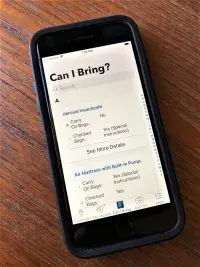 These oversized liquids, gels and aerosols were removed from carry-on bags and thrown away. (TSA photo)
These oversized liquids, gels and aerosols were removed from carry-on bags and thrown away. (TSA photo)
LINTHICUM, Md.-- Summer travel is in full swing at Baltimore/Washington International Thurgood Marshall Airport (BWI) and Transportation Security Administration (TSA) officers are seeing a lot of prohibited at checkpoints, which results in more bag checks and slower checkpoint lines. Advance planning and packing properly is key to a smooth security checkpoint experience.
“We are seeing a lot of people who perhaps haven’t traveled in a long time and they are either unfamiliar with or forgetful about what can and cannot go into a carry-on bag,” said Andrea R. Mishoe, TSA’s Federal Security Director for Maryland. “We are seeing an increase in the number of travelers who haven’t flown recently, are new to air travel or are infrequent flyers. These travelers have started to take leisure flights to visit family, travel to meet friends, or take vacations and they are getting stopped at our checkpoint because they have brought prohibited items with them such as oversized liquids and even ammunition,” she said.
One of the most common prohibited items that TSA officers see at BWI Airport include oversized bottles of liquids, gels and aerosols that exceed the 3.4-ounce limit. Ammunition is also being brought to the checkpoints with increasing frequency. From loose bullets to full boxes of ammunition in addition to loaded and empty gun magazines are showing up at the airport checkpoints, Mishoe said.
Passengers who want to transport their ammunition must pack it properly for a flight in a checked bag. Gun magazines and ammunition clips, loaded or empty, must be securely boxed in a hard-sided case (with or without an unloaded firearm). Small arms ammunition and shotgun shells must be packed in their original box and declared to the airline. TSA’s web site has details on how to transport ammunition.
The most common prohibited items that travelers bring to checkpoints are liquids, gels and aerosols that are larger than the acceptable limit—shampoo, toothpaste, beverages, sun block, hand lotion, face cream, shaving cream, mouthwash and other toiletries. Each passenger may carry liquids, gels and aerosols that are 3.4 ounces (100 ml) or less through a checkpoint as long as those items fit into a one quart-sized, resealable bag. This is known as the 3-1-1 bag. Larger containers of liquids, gels and aerosols can be transported in checked baggage.
People should “take an extra minute or two while packing their carry-on bags to make sure that they aren’t packing prohibited items inside,” Mishoe advised. “We are seeing hundreds of oversized liquids, gels and aerosols at the checkpoints daily. Not only does this slow down the security checkpoint process, but it also results in a bag check. Keep in mind that during a pandemic, the idea is to reduce touchpoints, and a bag check does the opposite,” she said.
“Our TSA officers are seeing travelers arrive at the checkpoint with bottles of water, juice, energy drinks, coffee and soda. TSA officers will give passengers the choice to exit the security checkpoint to drink their beverages in the terminal or allow the officer to dispose of it,” Mishoe said. Travelers may bring empty containers such as a water bottle or insulated flask through checkpoints and fill them on the secure side of the checkpoint.
The exception to the 3-1-1 rule is that due to the pandemic, TSA is now allowing travelers to bring one 12-ounce container of liquid hand sanitizer per passenger in carry-on bags until further notice. Passengers can expect that these large liquid hand sanitizers will need to be screened separately, which will add some time to their checkpoint experience.
TSA offers several ways for travelers to find out if an item is permitted in a carry-on bag, checked bag, either or neither. The TSA web site has a feature on the homepage called “What can I bring?” Type in the name of the item and it will let you know if it should be packed in a checked bag or carry-on bag. The same handy feature is available on the free downloadable MyTSA app.
TSA is also active on social media. Travelers can send a question via Twitter to @AskTSA or via Facebook Messenger for live assistance in answering your questions from 8 a.m. to 7 p.m. ET weekdays; 9 a.m. to 7 p.m. on weekends and holidays.

